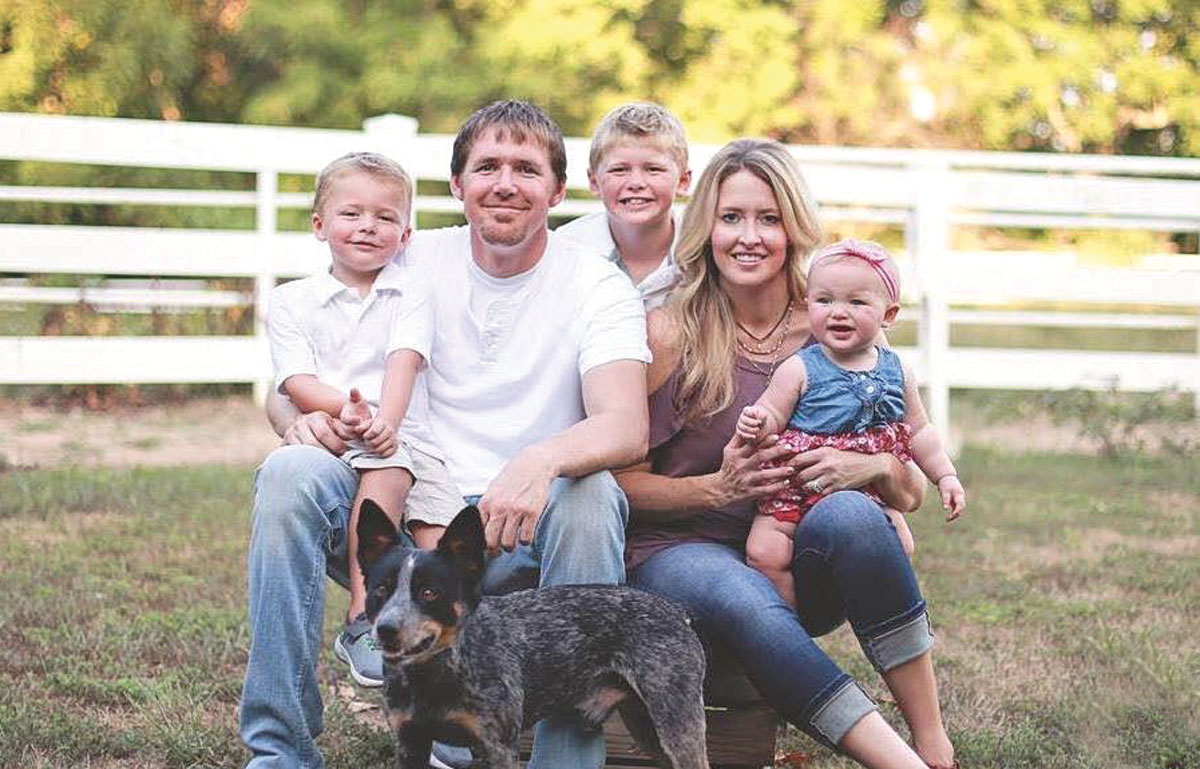
Kelly and Christy Clark continue to develop their growing herd
Kelly and Christy Clark of Greenwood, Ark., are each managers of area Walmarts and met through their mutual boss.
Fifteen years ago, during the liquidation of the 5,000-acre Ett Patterson Ranch, Kelly Clark bought 300 acres and the house. Now the Clark Diamond C Ranch is 1,000 acres of previous Patterson pasture land. With a look reminiscent South Fork of Dallas fame, the ranch is an idyllic setting for a diverse female breeding stock operation with steers being sold at market. Not long after purchasing the 300 acres, Kelly met his future wife Christy.
“Although she knew what a cow was and little else, she learned easily. We make a good team,” Clark said.
Kelly was an entrepreneur very early on. He started a meat rabbit business with just a couple of does and subsequently bought out a local meat rabbit operation. He soon had 300 does and sold 8-week-old fryers regularly to Pel Freez. He saved a few hundred dollars and then went to the Berryville, Ark., sale barn with his grandfather, Ogburn Johnson, where he, at only 5 or 6, bid on and purchased his first heifer, a Hereford to match the original short Herefords his grandfather raised.
Kelly credits his father Duane in giving him the best advice he’d ever received about ranching. His father told him it was important to follow the markets closely so he never had to sell cattle out of necessity. That sound advice has helped the ranch’s profitability.
The Clark cattle herd started with registered Santa Gertrudis because friend J.B. Hunt introduced him to the breed. For several years he showed the breed and produced cross calves. The next step in the herd development was to switch to Angus because the market wanted black and the bulls, which he was then selling, were easier to market. Kelly, therefore, has an Angus cow herd with some full-blooded. He breeds those with Hereford bulls to produce the currently popular black baldies.
The ranch has recently added F1 production, in his case a Brahman/Hereford cross. Kelly is in the process of developing his females with 100 Brahman cows and 100 Hereford cows. The reason for this addition is the cross handles heat well and has the advantage of hybrid vigor. Kelly believes the most successful crossing is with a Brahman cow and a Hereford bull rather than a Hereford cow with a Brahman bull because the cow handles the hot weather better and breeds successfully for more years, in addition to being a good mother and having good milk quality. One problem Kelly has is finding appropriate Brahman stock because Brahman breeders are hard-to-find. To compensate for this, Kelly is using AI to introduce new genetics. He used the process on 75 cows last year, picking female-sexed semen from bulls according to maternal traits, milk production, and docility while at the same time increasing weaning rates and marbling.
“Tiger Striped females are popular while the bulls are not. The goal is to sell replacement females and use the steers as market calves,” Kelly said.
The Diamond C Ranch operates with both fall and spring calves. Black baldies are weaned at 500 to 600 pounds while the F1 calves are weaned at 600 to 700 pounds. The calves are retained until they weigh 700 to 800 pounds, during which time they are backgrounded and fed a five-way mix bulk feed which is also fed two bulls to get them ready for breeding season. Backgrounding includes a vaccine protocol and an injectable wormer. Kelly wants calves that are bunk broke, quiet and gentle.
“He is worse than any woman in his daily care of an animal or a newborn in trouble. Kelly watches all of his cows all of the time and has only a 2 percent mortality rate,” Christy said.
The ranch produces 3,000 round bales in 2,000 square bales of mostly Bermuda hay with some fescue, orchard grass and ladino clover. Fertilizer is mostly commercial though some chicken litter is also spread with Kelly making a point of being selective with the chicken litter because some of his land is close to subdivisions. Kelly broadcast sprays for weeds and spot sprays as needed, especially for pigweed and buttercups.
While he has a few ponds, water is provided by wells piped to waterers available in each pasture. The original water source is an easily accessible aquifer under his land. Kelly believes fresh is critical in raising good cattle. One of the reasons Kelly chose this land was that a good watering system for every pasture already existed.
Kelly finds the Natural Resourcce Conservation Service a tremendous help with a knowledgeable staff that share information easily and thoroughly. He also finds cost sharing allows for important improvements to be made more quickly. He has used NRCS help with pasture management, cool season waterers and cross fencing.
“The ranch is really good to us and for us. Even though we have some hired help, the ranch provides special time for us to be together while we work the land and the animals.” Christy said.







Would like to see some pictures of your highland cows